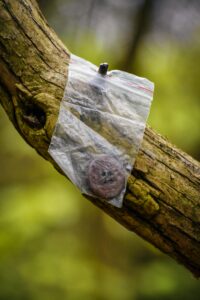🌿 What Are Bioplastics?
Unlike traditional plastics that requires fossil fuels, bioplastics are derived from renewable biological resources such as plants, algae, and even bacteria. They can either be biodegradable or bio-based but non-biodegradable, like bio-PE and bio-PET.

In contrast to traditional bioplastics which can take centuries to decompose, many bioplastics can break down naturally in composting environments. This unique feature of bioplastics significantly aids in reducing pollution due to the absence of wasteland.
🧪 How Waste Becomes Bioplastics
The process of converting waste to bioplastics typically involves fermentation techniques or engineering feats: Fermentation of Organic Waste: During the fermentation process, microorganisms break down agricultural residues, food scraps and plant materials.
New Developments in Waste-to-Bioplastics Technology (2024-2025)
Please be advised that the bio-waste to bioplastics technology area is developing at a rapid pace. New Developments include the following innovations:
PHA Production from Food Waste: Full Cycle Bioplastics and other companies are developing methods of creating PHAs which are biodegradable plastics, from wasted food.
Algal Bioplastics: Researchers are using microalgae which can be grown using industrial and agricultural waste as feedstock for bioplastic production. These algae bioplastics can be produced with the potential to absorb CO₂ during their production and therefore, are biodegradable.
Urban Bioreactors: Decentralized municipal bioreactors of smaller sizes located in urban centers can convert household waste to PLA, thus providing urban centers and municipalities a sustainable source of materials while managing organic waste efficiently.
Why It Matters
The transition towards waste-to-bioplastics offers remarkable advantages such as:
Reduced Landfill Waste: Decomposing waste in landfills produces methane emissions, a greenhouse gas, which is significantly reduced when organic material in landfills is low.
Lower Carbon Footprint: Virgin resources require a lot of energy to process, therefore using waste materials instead greatly reduces energy use as well as greenhouse gas emissions.
Circular Economy Promotion: Creates a nature-like closed loop production system by turning waste into resources.
Economic Opportunities: The production of bioplastics and green technologies is creating new industries and jobs.
💧 Challenges to Overcome
There are obstacles that need to be contacted even when there isn’t much promise:
Cost: The low demand and high supply of bioplastics makes them significantly more expensive than traditional plastic leading to hurdles in fostering a balanced market.
Scalability: Affordability alongside maintaining quality, greatly hinders the ability to increase production.
Composting Infrastructure: Not all areas have the industrial composting plants that are essential for properly breaking down bioplastics.
Public Awareness: Bioplastics serve maximum benefit when disposed of correctly. Educating the public on correct disposal methods will encourage optimal utility.
Companies and researchers are continuously trying to advance the efficiency of production and stress the improvement of material properties to increase acceptance among industries and consumers.
✨ The Future of Waste-to-Bioplastics
Due to the advancement of technology, coupled with rising awareness, waste that is turned into bioplastic waste will continue to flourish.